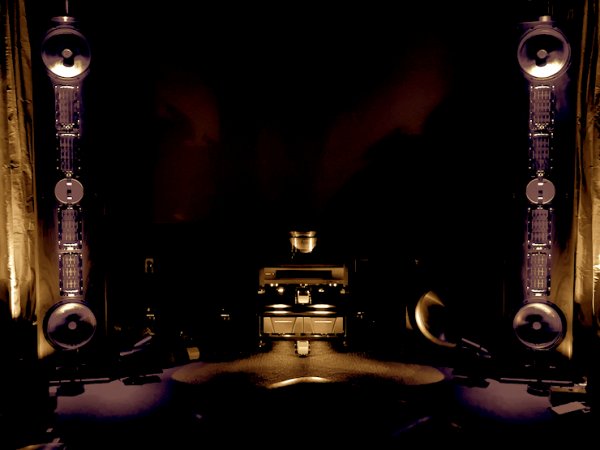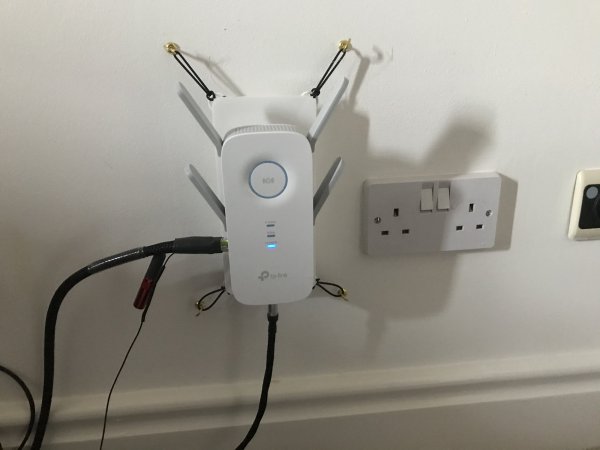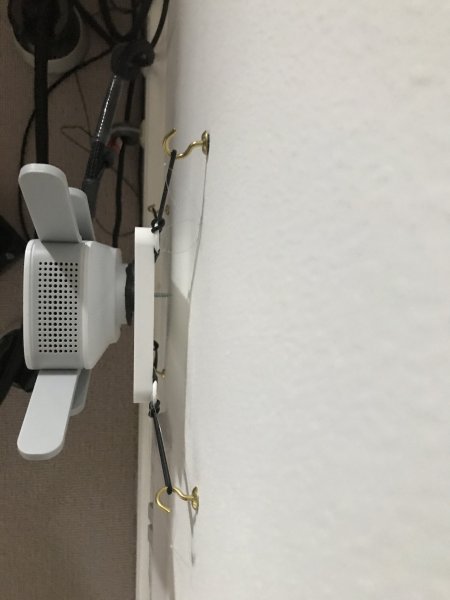There are a few other issues that we haven’t yet touched on, namely:
- Certain methods of vibration control can themselves introduce emphasis and colouration, or can make the music sound slow and plodding. This happens if the controls somehow affect the microdynamics of the music and the initial pinpoint percussive start of each note is missing, making the music sound boring and uninteresting.
- Coupling the system tightly to groundborne vibration also has the effect of blurring the music, making lyrics difficult to understand for example.
- Resonant frequencies are the most easlily excitable, but their harmonic frequencies are not far behind
- Certain components suffer from a multitude of different vibrational sources. As a simple example, take a network component that plugs into the wall. Firstly there‘s external vibration caused by the wall vibrating in time to the music. Then there’s the internal vibration generated by the rectification of AC to DC and finally the vibration from the internal transformer. If you want the unit to perform at its best, you need to ameliorate all three sources of vibration
As illustration, the following pictures show a modified wi-fi access point with anti-vibrational wall mounting and remote 5V DC supply.
When it comes to vibration you’ve got to know whats present and treat it specifically.
Blackmorec, you and Tima are killing me here. It seems you guys (and many others) can't stop chasing the isolation windmills even for a moment. Who cares about any potential alternative solutions or ways of thinking? Even if isolation's all over map and defies basic laws of nature, just give me something anything I've been confortable with all my life so I can embrace it? Did I read that correctly?
Certain methods of vibration control? I'm only aware of two primary methods that are diametrically opposed to one another. Isolation and resonant energy transfer. Actually, 3 if you include a hybrid of the two which actually everybody everywhere in high-end audio and other industries is practicing to one degree or another.
Assuming a scale of 0 to 10 with complete isolation at zero and complete resonant energy transfer at 10. Zero is impossible to achieve as general laws of physic / nature prohibit it so nobody is practicing complete isolation even though some may sleep better thinking they are. 10 is theoretically possible to achieve where everything is essnetually a superior mechanical conduit but realistically unreasonable. Since isolationist mfg'ers all too often and unknowingly incorporate materials and designs and techniques borrowed from resonant energy transfer (yet still claim them to be isolation products) I suspect the vast majority are playing around 2 or 3 mark on that scale.
BTW, there's one sure fire method to determine whether a vibration mgmt product is truly isolation-based or resonant energy-based. Can you describe what that method is?
Not too far from the same mark on that same scale might be one who does nothing but use the soft OEM footers already fastened to their components at the factory. BTW, to the best of my knowledge, soft footers were never initially installed on electric components to isolate from unwanted vibratiions but rather so as not the mar the furniture its placed on. But with the birth and populatity of vibration isolation, isolationist mfg'ers can without any additional cost claim their soft footers are isolating their component from unwanted vibrations. Nice.
You also speak as though you have significant experience with resonant energy transfer and IMO that simply is not possible. You obviously have some head knowledge but I cannot believe it's from significant or real firsthand experience. Otherwise, you would have NEVER made perhaps any of these comments. If you have, I apologize and I ask you provide examples of firsthand experience. But yes, I suppose certain implementations of resonant energy transfer can induce a blurring effect. Since you've obviously experienced this, perhaps you're willing to share under what conditions this blurring may occur? If not, I'd be happy to share when and why.
Certain components suffer from a mutitude of vibration sources? So the isolation methodology discriminates between electronic components? I'd love to hear which components. Could you also please list just the top 15 or 20 vibration sources?
Resonant frequencies are an issue, eh? Tell me, since most everything within an electronic component is either snuggly, tautly, or tightly fastened, or glued or soldered into place, how does the act of joining these disparate objects together alter an object's resonant frequency? I would think even determining a singular internal object's resonant frequency at the test bench with 100% accuracy is impossible to achieve since that object must anchored, placed, or gripped by some apparatus just to take the reading and that apparatus would no doubt alter the object's natural frequency. Unless perhaps readings are obtainable while the singular object is levitating. But then we'd probably have to consider the altitude and oxygen content.
Since you obviously are pleased with going down this abyss of a rabbit hole, then you can't just stop at a transistor, circuit board, op-amp, etc. You have to keep drilling down to every last component's natural frequency on a given circuit board, inside an op-amp, inside a transistor, etc, even any solder and epoxies, glues, and fastener types of which each have their own resonant frequency. Now we're getting back to Tima's comments in another thread about vibration isolation problems and solutions being all over the map. And then some.
Have you considered the possibility of the electronic component's resonant frequency as a whole or single object since everything within is either fastened, pinched, or glued in some fashion? Hence, every resonant frequency within the component is impacting every other object's resonant frequency within, right?
But even if you did, then a single electronic component's resonant frequency is now impacted by the platform upon which it's placed e.g. grandma's coffee table, rack, shelf, etc. Which leads us to the resonant frequencies of every object and connection and fastener within that platform singularly and as a dependent whole. Not to mention that platform's resonant frequency is now altered by the electronic component just placed on it and is now compounded by placing any combination of other electronic compoents on the same platform, which in turn will now once again alter the other electronic components' resonant frequency within the collection.
Then we get to the unique sub-floor which takes us eventually to the unique dwelling's unique construction and materials, its unique foundation, and finally the earth/ground which also varies everywhere.
A truly infinite number of combinations for which you must now address. Nice job. You've just gone full circle and then some to substantiate Tima's claims in another thread that isolation problems and solutions are all over the map. To which I fully agreed.
Oh, yeah. And after you've completed your heroic feat of drilling down the infinite combinations of ALL resonant frequencies, according to your own prior post you're right back at square one because you yourself agreed that sufficently isolating one form of vibration inherently traps at least one other source of vibration. Seriously?
Talk about chasing windmills? But as usual, the true isolationist sounds soooooooooo good and even "scientific" on paper. But it gets one nowhere in the end. It's just soap bubbles except on paper. But it also becomes more clear why a customer considering isolation solutions can be soooo easily swayed. It's all soooo deep and scientific and the measurements and graphs are good enough to intimate and make the sale.
To demonstrate the absurdity of some of this, all one needs to do take the folklore's narrative to its natural conclusion.
In sharp contrast to the abyss of the isolation method you choose and are obviously most comfortable with, I again present the very simple concept and analogy of the lightning rod of which resonant energy transfer is near identical. The lightning rod's simple purpose, function, and high success rate at redirecting perhaps most/all unwanted and highly destructive energy away from the valuable object before it can induce its catastrophic harm. And without any mental masturbation whatsoever.
Exactly like the lightning rod analogy, at least extreme forms of resonant energy transfer works and works extremely well for one simple reason. Because its principles remain entirely within the laws of nature (energy's natural behaviors) while vibration isolation fails miserably at perhaps every turn. Some to which you even admitted to in your earlier post.
As for your last comment about having to know what's present and treat it specifically? Clearly from your perspective, that's pure BS going down the never-ending abyss. But from my perspective, that's exactly what I do. And it's so frickin' simple, even a child can understand it.










